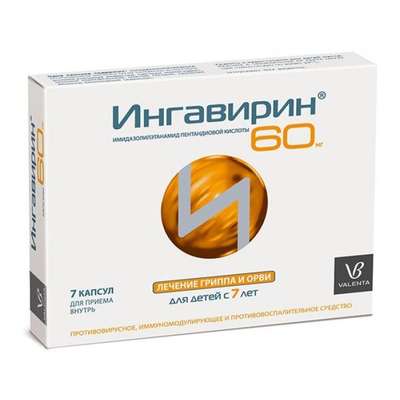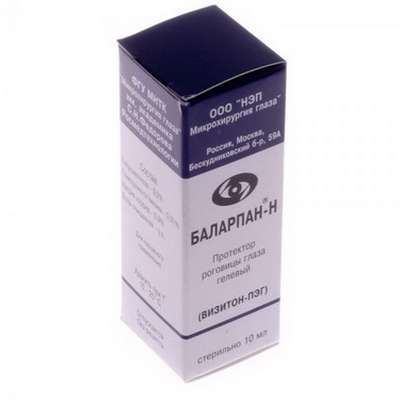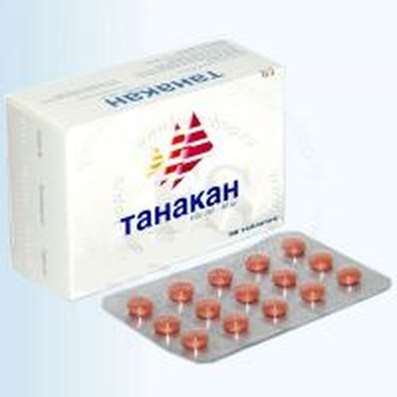Instruction for use: Insulin glargine
I want this, give me price
Active substance Insulin glargine
ATX codeA10AE04 Insulin glargine
Pharmacological group of substance Calcitonin
Hypoglycemic agent. Long-acting insulin [Insulins]
Composition and form of release
Solution for subcutaneous administration 1 ml
Insulin glargine 3,6378 mg
(Corresponding to 100 IU of human insulin)
Excipients: m-cresol; Zinc chloride; Glycerol (85%); Sodium hydroxide; Hydrochloric acid; water for injections
In vials of 10 ml (100 IU / ml); In a pack of cardboard 1 bottle or in cartridges of 3 ml; In the packaging of the contour cell 5 cartridges, in a pack of cardboard 1 contour cell packaging, or 1 cartridge of 3 ml in the cartridge system "OpticKlik"; In a pack of cardboard 5 cartridge systems.
Description of dosage form
Clear colorless solution.
Characteristic
Long-acting insulin. Insulin glargine is an analog of human insulin, obtained by recombinant DNA of bacteria of the species Escherichia coli (strains K12).
pharmachologic effect
Pharmacological action - hypoglycemic.
Pharmacodynamics
Insulin glargine is an analog of human insulin, characterized by low solubility in a neutral medium. In the formulation of Lantus, it is completely soluble, which is provided by an acidic solution solution for injection (pH4). After introduction into the subcutaneous fat, the solution, due to its acidity, enters the neutralization reaction to form micro-precipitates, from which small amounts of insulin glargine are continuously released, providing a predictable, smooth (without peaks) profile of the concentration-time curve, as well as a longer duration of action.
Relationship with insulin receptors: binding parameters with specific receptors of insulin glargine and human insulin are very close, and it is capable of mediating a biological effect similar to endogenous insulin.
The most important action of insulin, and therefore, of insulin glargine, is the regulation of glucose metabolism. Insulin and its analogues reduce glucose in the blood, stimulating glucose consumption by peripheral tissues (especially skeletal muscle and fat tissue), and also inhibiting the formation of glucose in the liver (gluconeogenesis). Insulin inhibits lipolysis in adipocytes and proteolysis, while enhancing protein synthesis.
The long duration of the action of insulin glargine is directly caused by a reduced rate of its absorption, which makes it possible to apply the drug once a day. After sc administration, the onset of action occurs, on average, after 1 hour. The average duration of action is 24 hours, the maximum is 29 hours.
Pharmacokinetics
A comparative study of the concentrations of insulin glargine and insulin-isophane in blood serum in healthy people and in patients with diabetes mellitus after the administration of drugs showed a delayed and significantly longer absorption, as well as the absence of a peak concentration in insulin glargine compared with insulin-isophane .
In a single day during the day after the introduction of Lantus, a stable average concentration of insulin glargine in the blood is reached after 2-4 days after the first dose.
With IV introduction, the half-lives of insulin glargine and human insulin were comparable.
In humans, in the subcutaneous fat, insulin glargine is partially cleaved from the carboxyl terminus (C-terminus) of the B chain (Beta chain) to form 21A-Gly-insulin and 21A-Gly-des-30B-Thr-insulin. In plasma there are both unchanged insulin glargine, and the products of its cleavage.
Indications
Diabetes mellitus, requiring insulin treatment, in adults, adolescents and children over 6 years of age.
Contraindications
Hypersensitivity to insulin glargine or to any of the excipients;
Children under 6 years of age (clinical data on the application at present not).
Caution should be used in pregnant women.
pregnancy and lactation
In animal studies, no direct or indirect data were obtained on the embryotoxic or fetotoxic effect of insulin glargine.
To date, there are no relevant statistics on the use of the drug during pregnancy. There are data on the use of Lantus in 100 pregnant women with diabetes mellitus. The course and outcome of pregnancy in these patients did not differ from those in pregnant women with diabetes mellitus who received other insulin preparations.
The appointment of Lantus in pregnant women should be done with caution. For patients with pre-existing or gestational diabetes mellitus, it is important during the entire pregnancy to maintain adequate regulation of metabolic processes. The need for insulin can decrease in the first trimester of pregnancy and increase during the II and III trimesters. Immediately after delivery, the need for insulin decreases rapidly (the risk of developing hypoglycemia increases). In these conditions, careful monitoring of glucose in the blood is essential.
Nursing women may need to adjust the dosage regimen of insulin and diet.
Side effects
Hypoglycemia - the most common undesirable consequence of insulin therapy, can occur if the dose of insulin is too high compared to the need for it. Attacks of severe hypoglycemia, especially recurrent, can lead to damage to the nervous system. Episodes of prolonged and severe hypoglycemia can endanger the lives of patients. Psychoneurological disorders in the background of hypoglycemia ("twilight" consciousness or its loss, convulsive syndrome) are usually preceded by symptoms of adrenergic counterregulation (activation of the sympathoadrenal system in response to hypoglycemia): hunger, irritability, "cold" sweat, tachycardia (the faster the hypoglycemia develops and It is more significant, the more pronounced the symptoms of adrenergic counterregulation).
Undesirable effects from the eyes. Significant changes in the regulation of blood glucose can cause temporary visual impairment due to changes in tissue turgor and the refractive index of the lens of the eye. Long-term normalization of blood glucose reduces the risk of progression of diabetic retinopathy. Insulin therapy, accompanied by sharp fluctuations in blood glucose, may lead to temporary worsening of the course of diabetic retinopathy. In patients with proliferative retinopathy, especially those who do not receive photocoagulation treatment, episodes of severe hypoglycemia can lead to the development of transient loss of vision.
Lipodystrophy. As with any other insulin medication, lipodystrophy and local absorption / absorption of insulin may develop at the injection site. In clinical trials with Lantus insulin therapy lipodystrophy was observed in 1-2% of patients, whereas lipoatrophy was generally uncharacteristic. The constant change of injection sites within the body regions recommended for insulin administration may help to reduce the severity of this reaction or prevent its development.
Local reactions in the field of administration and allergic reactions. In clinical trials with Lantus insulin therapy, reactions at the site of administration were observed in 3-4% of patients. These reactions included redness, pain, itching, hives, swelling, or inflammation. Most minor reactions at the site of insulin administration are usually resolved in a period of time from a few days to several weeks. Allergic reactions of immediate type hypersensitivity to insulin are rare. Similar reactions to insulin (including insulin glargine) or excipients may be manifested by the development of generalized skin reactions, angioedema, bronchospasm, arterial hypotension or shock and may thus pose a threat to the patient's life.
Other reactions. The use of insulin can cause the formation of antibodies to it. In clinical trials in groups of patients treated with insulin-isophane and insulin glargine, the formation of antibodies that cross-reacted with human insulin was observed at the same frequency. In rare cases, the presence of such antibodies to insulin can cause the need for correction of dosing in order to eliminate the tendency to develop hypo- or hyperglycemia. Rarely, insulin can cause delay in sodium excretion and edema, especially if intensified insulin therapy leads to an improvement in previously inadequate regulation of metabolic processes.
Interaction
A number of drugs affect the metabolism of glucose, which may require correction of the dose of insulin glargine.
Drugs that can increase hypoglycemic action of insulin and increase the predisposition to hypoglycemia include oral hypoglycemic agents, ACE inhibitors, disopyramide, fibrates, fluoxetine, MAO inhibitors, pentoxifylline, propoxyphene, salicylates and sulfonamide antimicrobials. To drugs that can reduce the hypoglycemic effect of insulin, include SCS, danazol, diazoxide, diuretics, glucagon, isoniazid, estrogens, gestagens, phenothiazine derivatives, somatotropin, sympathomimetics such as epinephrine (adrenaline), salbutamol, terbutaline and thyroid hormones, inhibitors Protease, some neuroleptics (for example olanzapine or clozapine).
Beta-adrenoblockers, clonidine, lithium salts or alcohol can both enhance and weaken the hypoglycemic action of insulin.
Pentamidine may cause hypoglycemia, which is sometimes replaced by hyperglycemia.
In addition, under the influence of such sympatholytic drugs as beta-blockers, clonidine, guanfacine and reserpine, the signs of adrenergic counterregulation may be reduced or absent.
Dosing and Administration
P / k, in the subcutaneous fat of the stomach, shoulder or thigh, always at the same time 1 time per day. The injection sites should alternate with each new injection within the recommended areas for the administration of the drug.
In / in the introduction of the usual dose, intended for SC administration, can cause the development of severe hypoglycemia.
The dose of Lantus and the time of day for its administration are selected individually. In patients with type 2 diabetes mellitus, Lantus can be used both as a monotherapy and in combination with other hypoglycemic drugs.
Transition from treatment with other hypoglycemic drugs to Lantus. When replacing the scheme of treatment with insulin of medium duration or long-term effect on the Lantus treatment regimen, correction of the daily dose of basal insulin may be required, and there may be a need to change the concomitant antidiabetic therapy (doses and regimens of additionally used short acting insulin or their analogs or doses of oral hypoglycemic drugs ). When transferring patients from twice daily insulin-isophane administration to a single Lantus administration in order to reduce the risk of hypoglycemia in the night and early morning periods, the initial dose of basal insulin should be reduced by 20-30% in the first weeks of treatment. During the period of dose reduction, doses of short insulin can be increased, and then the dosage regimen should be adjusted individually.
Lantus should not be mixed with other insulin preparations or diluted. When mixing or diluting, the profile of its action over time can change, in addition, mixing with other insulins can cause precipitation.
As with other human insulin analogues, in patients receiving high doses of drugs due to the presence of antibodies to human insulin, an improvement in the response to insulin administration may be observed when switching to Lantus.
During the transition to Lantus and in the first weeks after it requires careful monitoring of blood glucose.
In the case of improving the regulation of metabolism and the resulting increase in sensitivity to insulin, further correction of the dosing regimen may become necessary. Correction of the dose may also be required, for example, with a change in the patient's body weight, lifestyle, time of the day for drug administration, or when other circumstances contribute to an increase in the predisposition to hypo- or hyperglycaemia.
The drug should not be administered iv. The duration of action of Lantus is due to its introduction into the subcutaneous fat tissue.
Overdose
Symptoms: severe and sometimes prolonged hypoglycemia, which threatens the patient's life.
Treatment: episodes of moderate hypoglycemia are usually stopped by ingestion of digestible carbohydrates. It may be necessary to change the dosage regimen of the drug, diet or physical activity. Episodes of more severe hypoglycemia, accompanied by coma, convulsions or neurological disorders, require / m or n / c injection of glucagon, as well as in / in the introduction of a concentrated solution of dextrose. It may be necessary to take carbohydrates for a long time and observe the specialist, since Hypoglycemia can recur after visible clinical improvement.
Precautionary measures
Compatibility guidelines. Lantus should not be confused with any other drugs. It is necessary to make sure that the syringes do not contain the remains of other drugs.
special instructions
Lantus is not a drug of choice for the treatment of diabetic ketoacidosis. In such cases, the introduction of short-acting insulin is recommended. Due to limited experience with Lantus, it was not possible to evaluate its efficacy and safety in the treatment of patients with impaired liver function or patients with moderate to severe or severe renal insufficiency. In patients with impaired renal function, the need for insulin may decrease due to the weakening of the processes of its elimination. In elderly patients, progressive deterioration of kidney function can lead to a persistent decrease in insulin requirements. In patients with severe hepatic insufficiency, the need for insulin can be lowered due to a decrease in the ability to gluconeogenesis and biotransformation of insulin. In case of ineffective control over the level of glucose in the blood, as well as in the presence of a tendency to develop hypo- or hyperglycemia, before proceeding with the correction of the dosing regimen, it is necessary to check the accuracy of compliance with the prescribed treatment regimen, the injection site and the technique of competent injection of injections, Considering all factors relevant to the problem.
Hypoglycemia. The time of development of hypoglycemia depends on the profile of the action of the insulin used and can thus change with a change in the treatment regimen. Due to an increase in the time of insulin administration of a prolonged action in the use of Lantus, the likelihood of developing nocturnal hypoglycemia decreases, whereas in the morning hours this probability may increase. Patients who have episodes of hypoglycemia may have a particular clinical significance, such as patients with severe stenosis of the coronary arteries or cerebral vessels (risk of cardiac and cerebral complications of hypoglycemia), as well as patients with proliferative retinopathy, especially if they do not receive photocoagulation treatment (risk Transient loss of vision due to hypoglycemia), special precautions should be followed, and it is also recommended to intensify monitoring of blood glucose. Patients should be aware of the circumstances in which the symptoms-precursors of hypoglycemia may change, become less pronounced or absent in certain risk groups. These groups include:
- patients who have significantly improved regulation of blood glucose;
- Patients in whom hypoglycemia develops gradually;
- elderly patients;
- patients with neuropathy;
- patients with long-term diabetes mellitus;
- Patients suffering from mental disorders;
- patients receiving concomitant treatment with other medications (see "Interaction").
Such situations can lead to the development of severe hypoglycemia (with possible loss of consciousness) before the patient realizes that he is developing hypoglycemia.
In the event that normal or decreased glycosylated hemoglobin levels are noted, the possibility of developing recurrent unrecognized episodes of hypoglycemia (especially at night) should be considered.
Patient compliance with the dosing regimen, diet and diet, proper use of insulin and control over the appearance of hypoglycemia symptoms contribute to a significant reduction in the risk of developing hypoglycemia. Factors that increase the predisposition to hypoglycemia, require particularly careful observation, because Can cause the need to adjust the dose of insulin. These factors include:
- change of place of insulin administration;
- Increased sensitivity to insulin (for example, when eliminating stress factors);
- unusual, increased or prolonged physical activity;
- intercurrent diseases, accompanied by vomiting, diarrhea;
- violation of diet and diet;
- missed food intake;
- consumption of alcohol;
- Some uncompensated endocrine disorders (eg, hypothyroidism, adenohypophysis failure or adrenal cortex);
- concomitant treatment with some other drugs.
Intercurrent diseases. When intercurrent diseases require more intensive monitoring of blood glucose. In many cases, the analysis of the presence of ketone bodies in the urine is shown, and often a correction of the insulin dosage regimen is required. The need for insulin is often increased. Patients with type 1 diabetes should continue to regularly consume at least a small amount of carbohydrates, even if they are able to consume only small amounts of food or can not eat at all if they have vomiting, and the like. These patients should never completely stop the introduction of insulin.
Storage conditions
In a dark place, in a refrigerator at a temperature of 2-8 ° C (do not freeze). After the beginning of use, store at a temperature of no higher than 25 ° C in a carton (but not in the refrigerator).
Keep out of the reach of children.
Shelf life
3 years.
Do not use after the expiry date printed on the package.

 Cart
Cart





